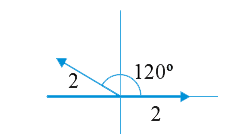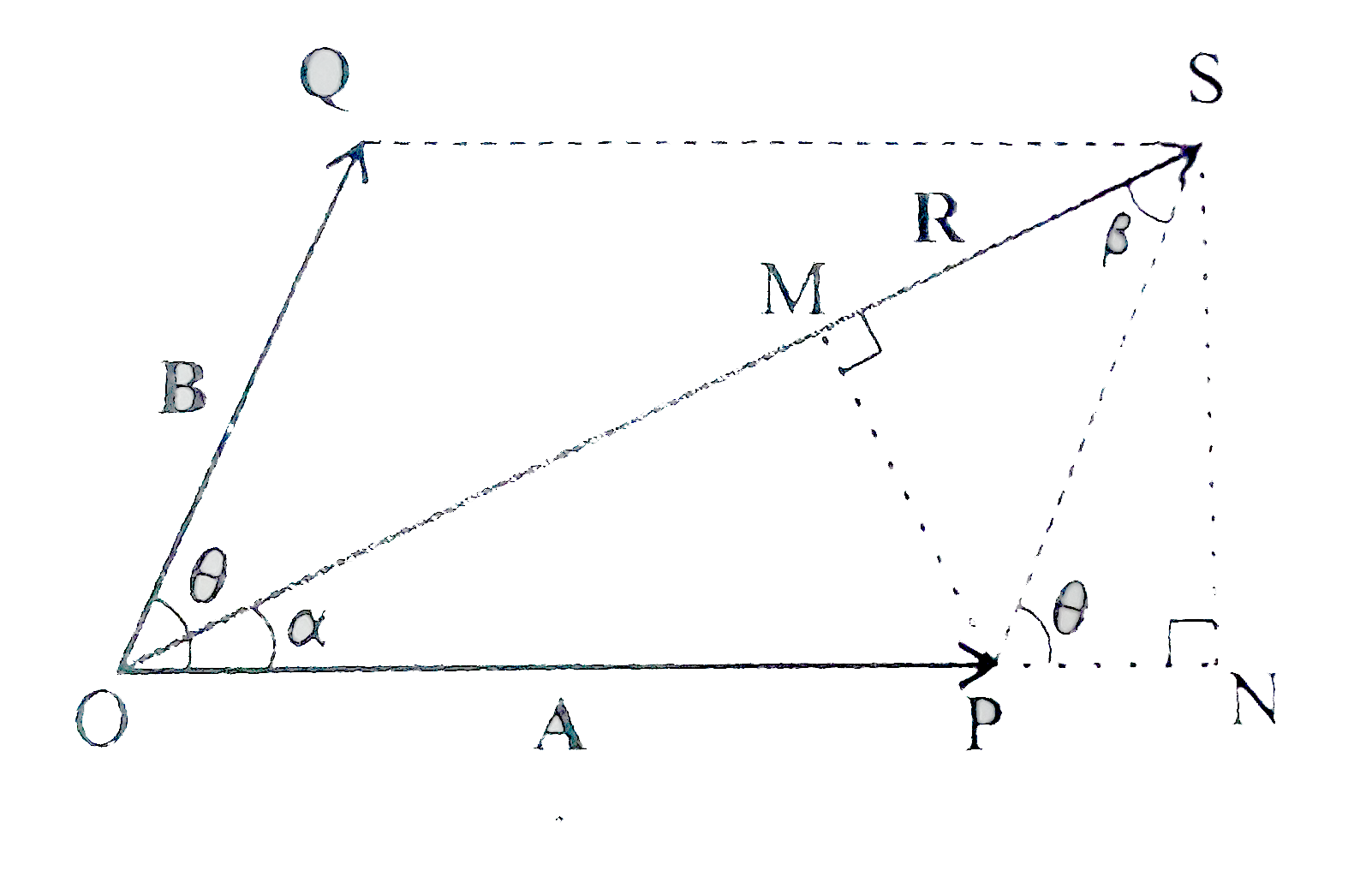The resultant of the two vectors →a and →b of magnitudes 6 and 10 respectively is at right angles to the vector →a Find their resultant and also the angle between the given vectors.
127∘
143∘
120∘
150∘
The correct Answer is:a
To solve the problem, we will follow these steps:
Step 1: Understand the problem
We have two vectors, A and B, with magnitudes 6 and 10 respectively. The resultant vector R is at right angles to vector A. We need to find the magnitude of the resultant vector R and the angle between vectors A and B.
Step 2: Set up the relationship using Pythagorean theorem
Since the resultant vector R is at right angles to vector A, we can use the Pythagorean theorem. The relationship can be expressed as:
B2=A2+R2
Where:
- A=6
- B=10
- R is the resultant vector we need to find.
Step 3: Substitute the known values
Substituting the known values into the equation:
102=62+R2
This simplifies to:
100=36+R2
Step 4: Solve for R
Now, we can isolate R2:
R2=100−36
R2=64
Taking the square root of both sides gives:
R=√64=8
So, the magnitude of the resultant vector R is 8 units.
Step 5: Find the angle between vectors A and B
Let the angle between vectors A and B be θ. Since we have a right triangle formed by vectors A, B, and the resultant R, we can use the tangent function to find θ:
tan(θ)=oppositeadjacent=AR
Substituting the values:
tan(θ)=68=34
Step 6: Calculate the angle
To find θ, we take the arctangent:
θ=tan−1(34)
Calculating this gives:
θ≈36.87∘ (or 37 degrees)
Step 7: Determine the total angle between vectors A and B
Since the resultant vector R is at right angles to vector A, the angle between vectors A and B is:
ϕ=90∘+θ=90∘+37∘=127∘
Final Results
- The magnitude of the resultant vector R is 8 units.
- The angle between vectors A and B is 127 degrees.
We have two vectors, A and B, with magnitudes 6 and 10 respectively. The resultant vector R is at right angles to vector A. We need to find the magnitude of the resultant vector R and the angle between vectors A and B.
Since the resultant vector R is at right angles to vector A, we can use the Pythagorean theorem. The relationship can be expressed as:
B2=A2+R2
Where:
- A=6
- B=10
- R is the resultant vector we need to find.
Substituting the known values into the equation:
102=62+R2
This simplifies to:
100=36+R2
Now, we can isolate R2:
R2=100−36
R2=64
Taking the square root of both sides gives:
R=√64=8
So, the magnitude of the resultant vector R is 8 units.
Let the angle between vectors A and B be θ. Since we have a right triangle formed by vectors A, B, and the resultant R, we can use the tangent function to find θ:
tan(θ)=oppositeadjacent=AR
Substituting the values:
tan(θ)=68=34
To find θ, we take the arctangent:
θ=tan−1(34)
Calculating this gives:
θ≈36.87∘ (or 37 degrees)
Since the resultant vector R is at right angles to vector A, the angle between vectors A and B is:
ϕ=90∘+θ=90∘+37∘=127∘
- The magnitude of the resultant vector R is 8 units.
- The angle between vectors A and B is 127 degrees.
Topper's Solved these Questions
- INTRODUCTION TO VECTORS & FORCES Book:VMC MODULES ENGLISHChapter:INTRODUCTION TO VECTORS & FORCES Exercise:level 2
Explore 65 Videos
- INTRODUCTION TO VECTORS & FORCES Book:VMC MODULES ENGLISHChapter:INTRODUCTION TO VECTORS & FORCES Exercise:JEE Main ( ARCHIVE ) ( LEVEL-1)
Explore 12 Videos
- INTRODUCTION TO VECTORS & FORCES Book:VMC MODULES ENGLISHChapter:INTRODUCTION TO VECTORS & FORCES Exercise:JEE Advanced ( ARCHIVE LEVEL-2)
Explore 12 Videos
- GRAVITATIONBook:VMC MODULES ENGLISHChapter:GRAVITATIONExercise:JEE Advance (Archive) TRUE/FALSE
Explore 1 Video
- JEE MAIN - 5Book:VMC MODULES ENGLISHChapter:JEE MAIN - 5Exercise:PART I : PHYSICS (SECTION - 2)
Explore 5 Videos
Similar Questions
Find the magnitude and direction of the resultant of given vectors

View SolutionConsider a system of two vectors
→a=3ˆi+4ˆj,→b=ˆi+ˆj ,
View SolutionThe magnitude of the vector product of two vectors and may be : →A and →B
View SolutionLet →C=→A+→B then :
View SolutionFind the magnitude and direction of the resultant of two vectors A and B in the terms of their magnitudes and angle θ between them.

View SolutionWhen two vectors a and b of magnitudes 'a' and 'b' respectively are added, the magnitude of resultant vector is always
View SolutionGiven vector→A=2ˆI+3ˆj , the angle between →A and y-axis is :
View SolutionThe maqunitudes of vecotr →A,→B and →C are respectively 12,5 and 13 units and →A+→B=→C then the angle between →A and →B is :
View SolutionIf →A+→B+→C =0 and A = B + C, the angle between →A and →B is :
View SolutionTwo vectors having magnitude 12 and 13 are inclined at and angle45∘ to each other.find their resultant vector.
View Solution